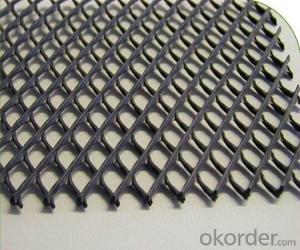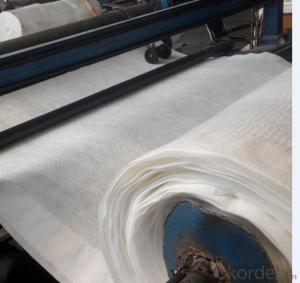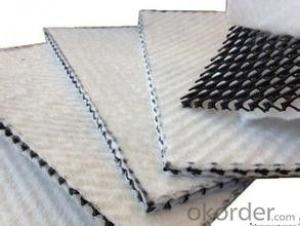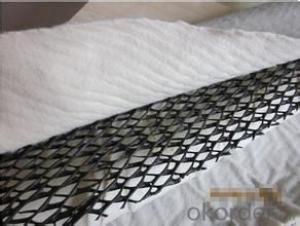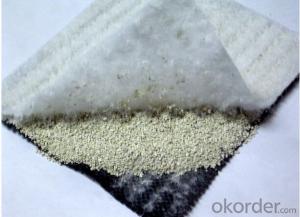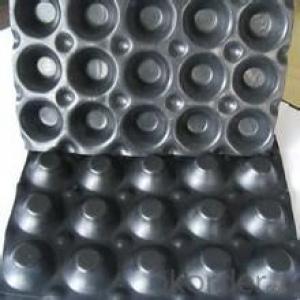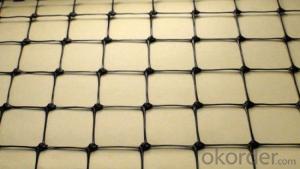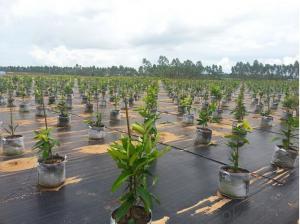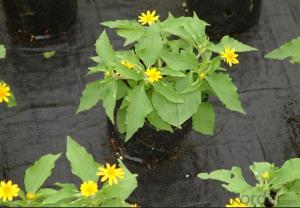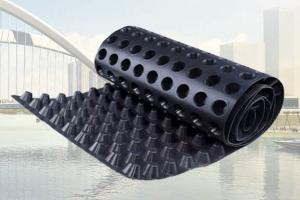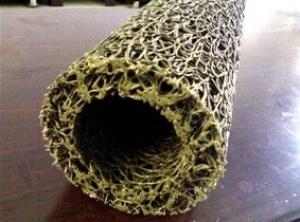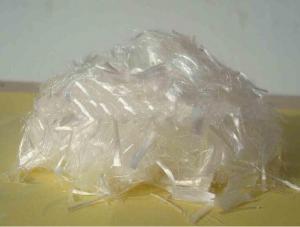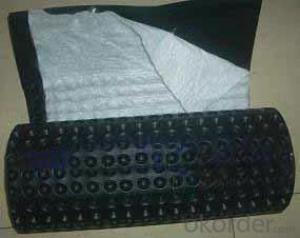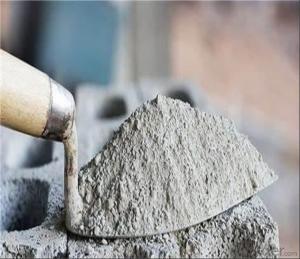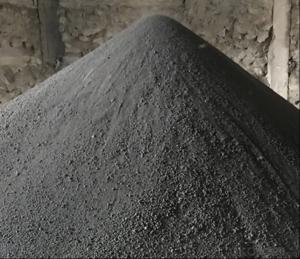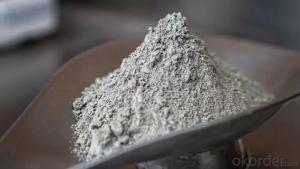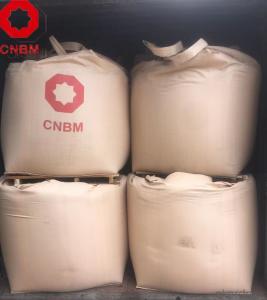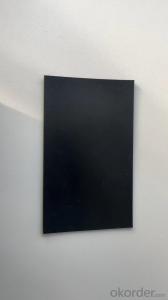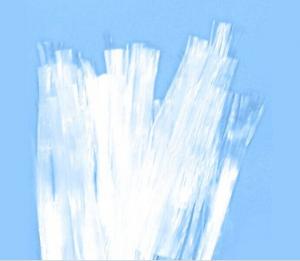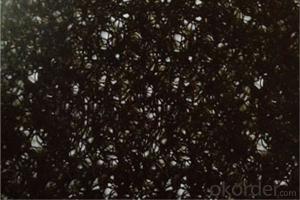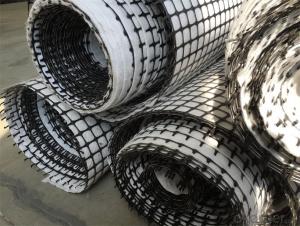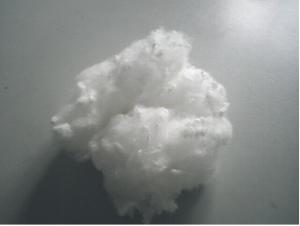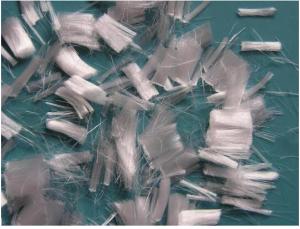Geocomposite Geonet For Drainage with High Quality Level
- Loading Port:
- Qingdao
- Payment Terms:
- TT OR LC
- Min Order Qty:
- 2000 m²
- Supply Capability:
- 200000 m²/month
OKorder Service Pledge
OKorder Financial Service
You Might Also Like
Geocomposite Geonet For Drainage
Introduction:
Geocomposite Geonet For Drainage are engineered to replace costly, conventional open graded aggregate and/or perforated- pipe subsurface drainage systems. The Geonet-geotextile Drainage Geocomposite is created by laminating a filtration geotextile on one or both sides of a Geonet. Geocomposite Drainages have reached acceptance as state-of-the-practice because they provide sufficient in-place drainage and offer reduced material cost, installation time and design complexity over conventional systems.
Specifications and technical parameters:
Item | Unit | |||||||
1200g | 1400g | 1600g | 1800g | 2000g | ||||
1 | Compound Weight of Unit Area | g/m2 | ≥1200 | ≥1400 | ≥1600 | ≥1800 | ≥2000 | |
2 | Compound Thickness | mm | ≥6.0 | ≥7.0 | ≥8.0 | ≥9.0 | ≥10.0 | |
3 | Compound Tensile Strength | KN/m | ≥16.0 | ≥16.0 | ≥16.0 | ≥16.0 | ≥16.0 | |
4 | Compound Hydraulic Conductivity | m2/s | ≥1.2×10-4 | ≥1.2×10-4 | ≥1.2×10-4 | ≥1.2×10-4 | ≥1.2×10-4 | |
5 | Net and Non-woven Geotextile Peel Strength | KN/m | ≥0.3 | ≥0.3 | ≥0.3 | ≥0.3 | ≥0.3 | |
6 | Net Thickness | mm | ≥5.0 | ≥5.0 | ≥6.0 | ≥7.0 | ≥8.0 | |
7 | Net Tensile Strength | KN/m | ≥13.0 | ≥15.0 | ≥15.0 | ≥15.0 | ≥15.0 | |
8 | Non-woven Geotextile Weight of Unit Area | g/m2 | ≥200 | ≥200 | ≥200 | ≥200 | ≥200 | |
9 | Non-woven Geotextile Permeability | cm/s | ≥0.3 | ≥0.3 | ≥0.3 | ≥0.3 | ≥0.3 | |
10 | Width | m | 2.1 | 2.1 | 2.1 | 2.1 | 2.1 | |
11 | Roll Length | m | 30 | 30 | 30 | 30 | 30 | |
Application:
1). Mainly used in the project of soft base disposal.
2). Used in the roadbed reinforcement.
3).Used in the slope fence and slope of coast protection.
4). Used in the bridge platform reinforcement.
5) used in the reinforcement of the bottom of reservoir.
6). Used in grassed car parks, overflow car parks, golf buggy paths, light aircraft taxiways, grass paths, grass car parks, emergency access routes, equestrian surface reinforcement, grass verges protection and caravan parks.
Features:
1)Excellent drainage function, can bear long time hige press load
2)High tensile and shear strength
3Reduce the rate geotextile embedding into the core of geonet, can protect long time stable water conductivity
4)Tri-dimension composite geonet for drainage can bear more than 2000kpa compression load
5)Its anti-compression capacity is much larger than common geonet for drainage
6) Certificate :ISO14001:2004, ISO9001:2008
FAQ:
1) Can you supply free samples?
Yes, our samples are free, but express fees are usually on buyer's account.
2) Can you accept third party test?
Yes, we accept totally and we also have done so many tests, like SGS, BSJ, etc.
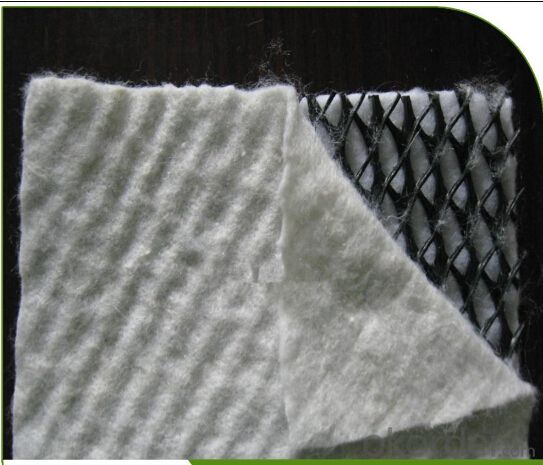
- Q:Can earthwork products be used in green roof construction?
- Yes, earthwork products can be used in green roof construction. Earthwork products such as soil, compost, and lightweight growing media are commonly used to create a suitable substrate for planting on a green roof. These materials provide the necessary nutrients, drainage, and water retention properties required for successful green roof vegetation.
- Q:Can earthwork products be used in bridge abutment construction?
- Yes, earthwork products can be used in bridge abutment construction. Earthwork products such as fill materials, geotextiles, and retaining walls are commonly used to support and stabilize bridge abutments. These products help in providing a solid foundation, preventing erosion, and ensuring the stability and longevity of the abutment structure.
- Q:Are earthwork products suitable for constructing fish ponds?
- Yes, earthwork products are suitable for constructing fish ponds. Earthwork products, such as clay, soil, and geomembranes, can be used to create a stable and watertight foundation for fish ponds. These materials can be shaped and compacted to create the desired pond structure, ensuring proper containment of water and a conducive habitat for fish. Additionally, earthwork products can be used to create slopes, berms, and other features that aid in water management and maintenance of the fish pond.
- Q:Can geosynthetics be used for lining irrigation canals?
- Yes, geosynthetics can be used for lining irrigation canals. Geosynthetics such as geomembranes and geotextiles are commonly used in irrigation canal lining to prevent seepage of water, enhance the durability of the canal, and improve water management efficiency. These materials provide a barrier against water leakage and erosion, ensuring that water is effectively delivered to crops and minimizing water wastage. Additionally, geosynthetics can reduce maintenance costs and increase the lifespan of irrigation canals.
- Q:What are the advantages of using geosynthetic erosion control blankets?
- Geosynthetic erosion control blankets offer several advantages such as effective erosion control, reduction in sediment runoff, enhanced vegetation growth, and long-term durability. They provide immediate protection, minimize soil erosion, and promote the establishment of vegetation, ultimately leading to the stabilization of slopes and prevention of further erosion. Additionally, these blankets are cost-effective, easy to install, and can be customized to fit specific project requirements.
- Q:What are the different cost considerations for earthwork products?
- Some of the different cost considerations for earthwork products include the type and quality of the materials being used, the volume of earth being moved or excavated, the complexity of the project, the equipment and machinery required, labor costs, transportation and logistics, and any additional services or features needed.
- Q:What are the benefits of using geocells in green space development projects?
- The benefits of using geocells in green space development projects include enhanced soil stability, increased load-bearing capacity, improved drainage, reduced erosion, and cost-effectiveness. Geocells provide a sustainable and efficient solution for creating durable and long-lasting green spaces, making them an ideal choice for various landscaping and environmental restoration projects.
- Q:How do earthwork products help with slope stabilization?
- Earthwork products, such as geotextiles and geogrids, play a crucial role in slope stabilization. These products are designed to enhance the stability and strength of slopes by providing reinforcement and erosion control. Geotextiles can be installed to prevent soil erosion and promote vegetation growth, which helps bind the soil together. Geogrids, on the other hand, are used to reinforce the soil structure and increase its load-bearing capacity, thereby reducing the risk of slope failure. Overall, earthwork products provide an effective and sustainable solution for slope stabilization, preventing soil erosion and ensuring the long-term stability of slopes.
- Q:What are the advantages of using earthwork products in construction?
- There are several advantages of using earthwork products in construction. Firstly, earthwork products, such as soil, gravel, and sand, are readily available and easily sourced, making them cost-effective options for construction projects. Secondly, these materials can be easily compacted, providing a stable base for structures and improving their longevity. Additionally, earthwork products are often environmentally friendly, as they can be recycled and reused, reducing waste and minimizing the need for new materials. Lastly, these products can be easily manipulated and shaped, allowing for flexible and efficient construction processes.
- Q:What are the weight-bearing capacities of earthwork products?
- The weight-bearing capacities of earthwork products vary depending on the specific product and its intended use. It is important to consult the manufacturer's specifications or engineering guidelines for accurate information on weight-bearing capacities.
1. Manufacturer Overview |
|
|---|---|
| Location | |
| Year Established | |
| Annual Output Value | |
| Main Markets | |
| Company Certifications | |
2. Manufacturer Certificates |
|
|---|---|
| a) Certification Name | |
| Range | |
| Reference | |
| Validity Period | |
3. Manufacturer Capability |
|
|---|---|
| a)Trade Capacity | |
| Nearest Port | |
| Export Percentage | |
| No.of Employees in Trade Department | |
| Language Spoken: | |
| b)Factory Information | |
| Factory Size: | |
| No. of Production Lines | |
| Contract Manufacturing | |
| Product Price Range | |
Send your message to us
Geocomposite Geonet For Drainage with High Quality Level
- Loading Port:
- Qingdao
- Payment Terms:
- TT OR LC
- Min Order Qty:
- 2000 m²
- Supply Capability:
- 200000 m²/month
OKorder Service Pledge
OKorder Financial Service
Similar products
New products
Hot products
Hot Searches
Related keywords
